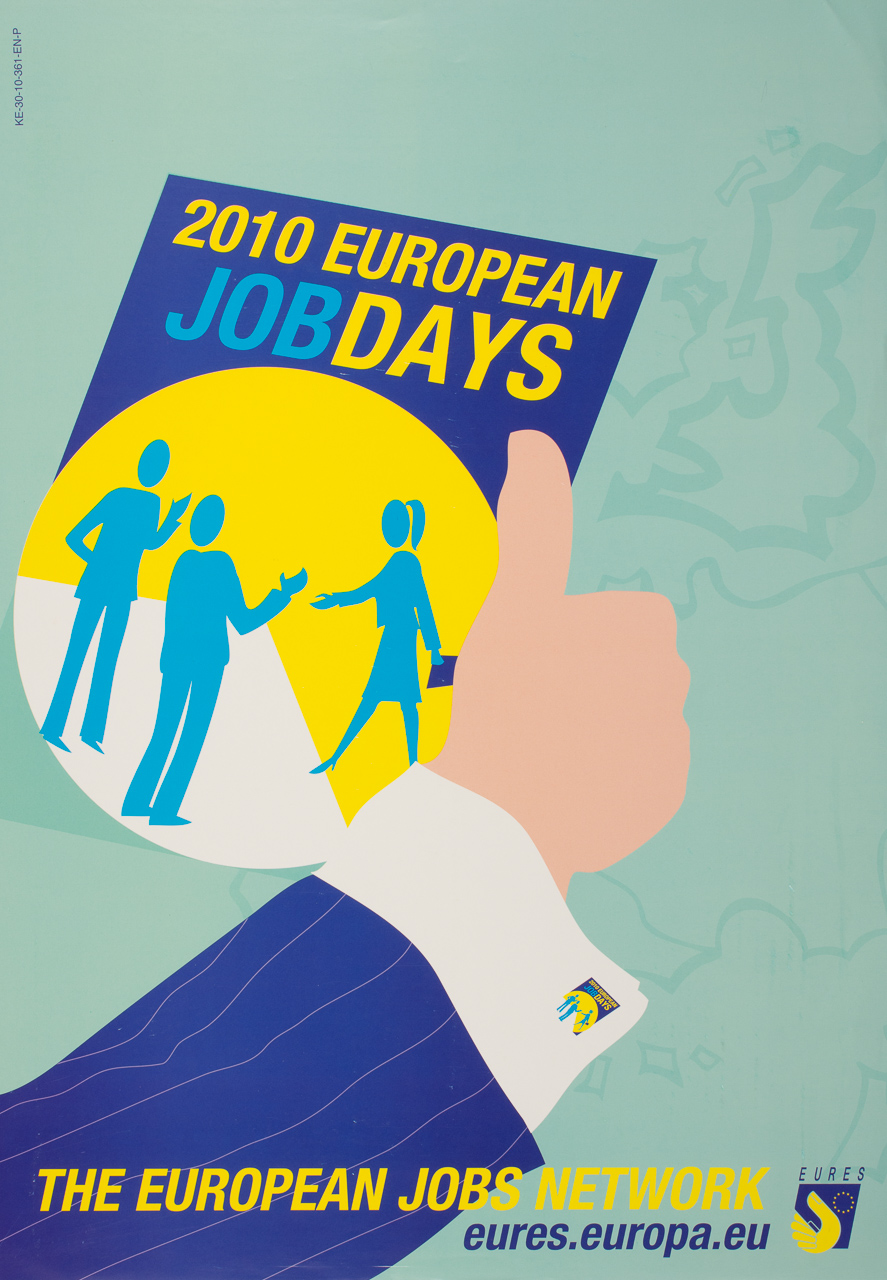Dr Jack Copley looks back at the EU approach to tackling unemployment in the context of the Covid-19 pandemic.
This poster was produced by the European Employment Services (EURES), which was established in 1993 to support the free movement of people enshrined in the treaty of Maastricht. EURES seeks to achieve this by ensuring clearer information about job opportunities for EU citizens, as well as by helping employers to recruit people across borders. The European Jobs Days are recruitment events where jobseekers and employers are brought together. EURES boasts that at such events ‘Employers will enjoy free and direct access to a huge pool of European jobseekers’.
A huge pool indeed - the European economy has long been plagued by significantly higher unemployment than other rich economies. In 1994, one year after the Maastricht Treaty came into effect, European unemployment stood at 11.5% - double that of the United States. This led one German economist to diagnose the problem as ‘Eurosclerosis’.
The forging of Europe’s Single Market was an attempt to overcome this weak economic performance. The Single Market and the later Monetary Union sought to tackle the problem of high unemployment by imposing competitive discipline on European economies. No longer could member states boost their economies by putting tariffs on imports or manipulating their currencies. Instead, they would have to rely on making their workforces more competitive. By scrapping employment protections and making it easier for companies to fire workers, many governments hoped that businesses would be incentivised to create more jobs. This labour market ‘flexibility’ was supposed to be accompanied by ‘security’ for workers through the creation of a European social safety net - although this social dimension was rather toothless in the end. While there would now be less protections against dismissal, bodies like EURES were intended to help unemployed workers smoothly transition into a new job.
This approach to reducing unemployment could claim some success at first. By 2007, European unemployment had dropped to 7.5%. This progress, however, was reversed by the 2008 financial crisis and its aftershocks. By 2013, unemployment had climbed back to its 1994 level. The EU’s response was more ‘flexibility’, this time with little pretence of ‘security’. European governments were encouraged (and in some cases forced) to further dismantle employment protections, restrain wage growth, and cut welfare provisions. Unemployment began to fall, but at the cost of the living standards of poor people - especially those in Spain, Greece, and Ireland - generating unstable political conditions.
Today, the pandemic lockdowns have caused European unemployment to spike again. In addition, some scholars predict an impending wave of job-destroying automation. Whether the EU will respond with a call for even great ‘flexibility’ on the part of workers remains to be seen. But there is a limit to how much more precarity Europe’s working class will endure.
